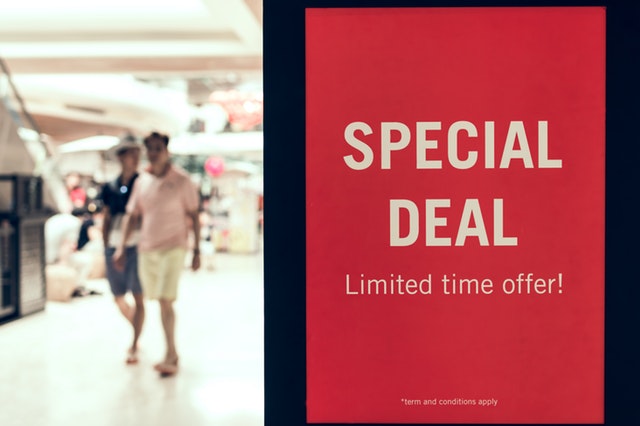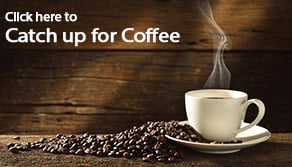As a person associated with marketing of professional services, I have often questioned myself as to which channel is the best of all and I can, with certainty say that there is not a single one better than another. At the end of the day, I suppose if a channel works great for your business, it should be pursued. While there is some degree of learning that we can gather from others, there is always a degree of trial and error – something that companies don’t always share.
I don’t believe myself to be a Sales guru or for that matter an authority in marketing. This belief helps me keep my eyes and ears open wide – in hope of getting some useful tips. Here are some that I found worth it and wanted to share.
1. Target Your Promotions to Specific Customer Groups
Who are you targeting? This, you’d agree is the first question to ask when running sales promotions. There are several tools in the market which help such as Facebook Pixel for example. If installed on your website, this could potentially help show your advertisements to people who have visited your website but not yet bought anything or accepted your call to action. There has been some discussion in recent times as to whether such ‘stalk the visitor’ marketing is socially acceptable, but as long there is no law advising refrain, one may as well use it. Analytics bear witness that targeted social promotion has yielded positive sales results.
Targeting specific customer groups doesn’t only apply to Facebook but for broader promotions as well. If you are focusing on existing or potential customers, a good place to start segregation could be your client list and perhaps take it a step forward to see where they hang out. Specific customer groups and locational knowledge can help build tailored advertisements – something that is normally expected to yield better results than generic adverts.

2. Use Videos to Create a Great Product Demo
Quick videos are becoming growingly popular these days, simply because it is easier for the viewer to get the information that you are promoting about your products/services without much effort of having to read it. Clearly, reading and even radio remain popular but the potential use of visual graphics can make videos really trendy. Besides, educational videos are more getting into fashion than salesy stuff and video is a great way of presenting educational content. This adds credibility, somewhat certainly.
Check out these examples to help you get started.
3. Create a Sense of Urgency in a Flash Sale Promotion
A straightforward way to create a sense of urgency for customers to purchase now instead of later is by driving a ‘flash sale’ promotion — one that involves a very clear deal, aesthetically pleasing call to action with an expiration date.
The key here is to be successfully able to streamline the promotional message across all channels – social media content to email campaigns and advertising, so that the deal you’re offering is emphasised from every angle. When releasing your flash sale promotion, stress on the hard deadline and remember, don’t keep shifting the deadline because then it loses credibility.
4. Give Away Coupons & Referral Bonuses
This is a popular strategy with big brand companies…When a user buys something from your business, offer them a credit coupon for their next purchase. This way, you may be able to secure their return, stay connected and encourage the user to buy something within a time period.
Other options may include:
Partnering with other businesses and offering their coupons
Developing a referral rewards program for existing customers and,
Collaborating with your bank to offer customers some cash back
5. Consider Offering an Upgrade Instead of a Price Cut
Have you ever wondered how some low-cost providers are surviving in the market, providing (if not, providing; at least claiming to provide) the same service/ product as you are?
For a fact, it is hard to compete on price, especially if you are giving a price cut without even ensuring that the customer is going to return. An effective way is to offer a bonus rather than a discount. Offering an upgrade or add-on could not only make a potential customer upgrade to the normal price later on but also is an opportunity for you to provide to him what is available. It could be a win-win, in the long run.
6. Personalize Your Business by Sharing Your Story
Many consumers are shying away from faceless massive corporations and taking their business to friendlier small companies. That being the case, it’s important for small businesses to introduce the people who drive the business and share their stories. It is often said, people don’t buy what you sell; they buy why you sell it; and to a considerable extent it is true, especially in the small business industry. People often want to know who they are dealing with; and more than often there is no need to promote sales; it is the personal genuineness of the business personnel that counts and in turn converts into sales. If you can effectively communicate your company values and what makes you special, you can expect to see a rise in popularity.
7. Make Sure You Have a “Funnel” in Place
Momentum, scarcity, and credibility are three crucial elements you should have when looking to boost your sales. This in pretty much how you could create a flash sale as well.
Momentum: This is the build-up, for example, 10 days before the promotion, you may need an email that informs your audience about this upcoming promotion — you need to build up the momentum and anxiety before the finale.
Scarcity: In your email messages, you’ll have to make it clear that this promotion is scarce. For example: “One day 25 percent off sales from May 5 to May 7 only.”
Credibility: Do not extend the promotion for any reason. At the end of the promised promotion period, you will have to end the promotion immediately. The key is to make the people who missed this promotion have something to “regret.” Next time, the people who had missed your first promotion will have a much better chance to convert.
8. Fine Tune as You Go
This is important. As mentioned earlier, there is some degree of trial and error in marketing and there’s always therefore room for improvement. Key Performance Indicators (KPIs) could be tracked to analyse the returns your activities are generating. There’s often other supporting tools as well such as Google Analytics, Facebook Insights and Twitter analytics for example to help understand online performance. Although these don’t indicate how your ongoing promotion should be tweaked for better results, this does help by indicating if your current promotions are yielding good results.






